Tinker & Estes Lab and Santa Cruz Field Station
| Home |
| Current Research |
| Graduate Students / Post Docs |
| Biologists / Technicians |
| Interns / Volunteers |
| Publications |
| Links |
| Our ftp site |
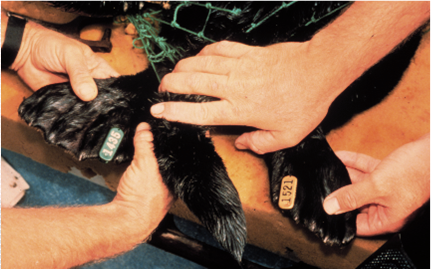
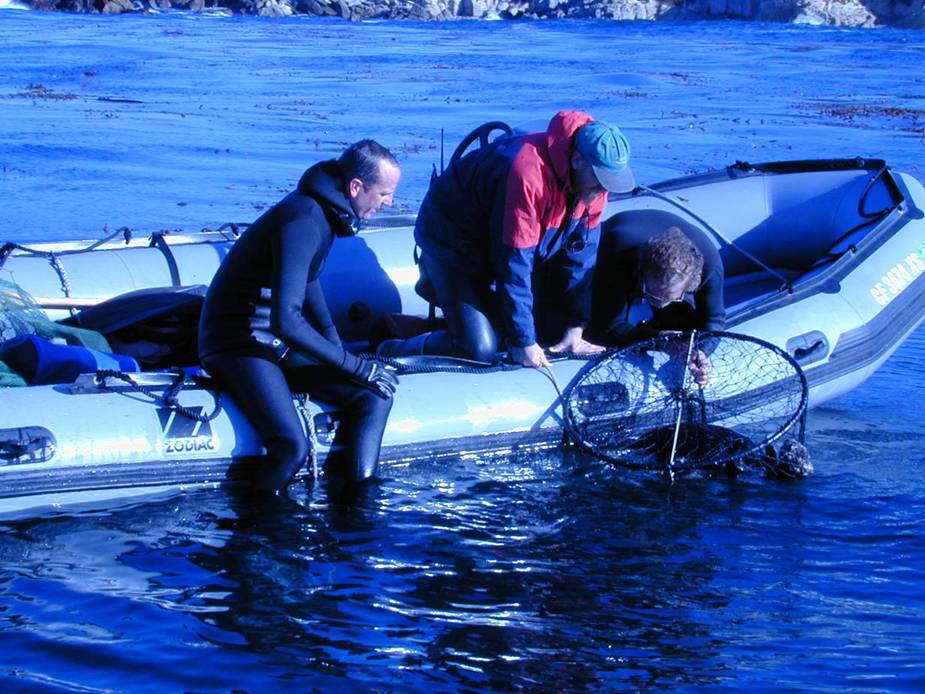

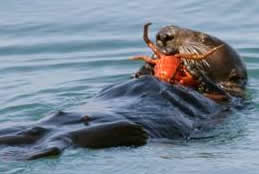
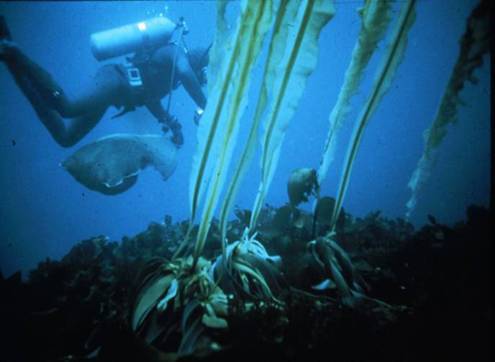
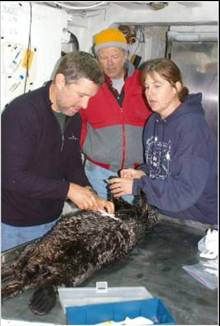
Ecology of Subtidal and Nearshore Communities How do sea otters impact near-shore marine food webs? |
|
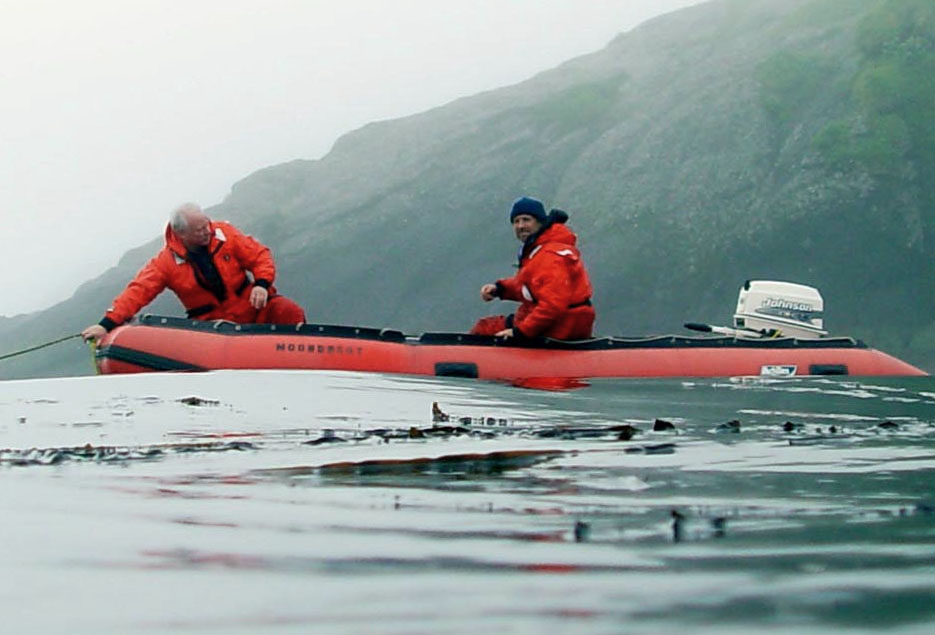  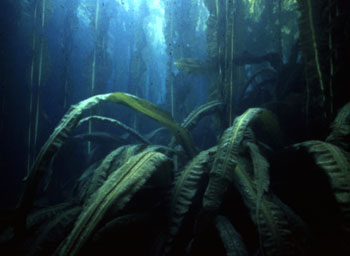 |
|
|
We are learning how southern sea otters feed, live, and die in central California then contrasting this information with similar data collected in the 1980s when the population was more stable. Comparisons are also being made between the populations at the center of the range and San Nicolas Island where sea otters were introduced in the late 1980s. In contrast to the stagnant growth seen in central California, the small population of sea otters at San Nicolas Island is increasing steadily, with an average rate of 9% per year since 1992. To discover why these rates vary so greatly, we are comparing the behavior, diet, health profiles, and population biology of the San Nicolas population with the central California population. In addition, a recent comparative project has taken us to the Commander Islands, Russia at the westernmost end of the Aleutian Island chain, where the sea otter population is thriving in stark contrast to the eastern portion of the archipelago. Using these data, we are developing predictive models that help to understand the factors responsible for population trends, and to evaluate management alternatives. |
Contact Us: USGS Santa Cruz Field Station - 100 Shaffer Road - Center for Ocean Health - Room 251 - Santa Cruz, CA 95060 - 831 459-2357